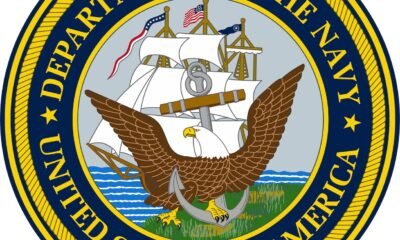All Navy Categories
U.S. Pacific Fleet Band Delivers Unforgettable Performances and Cultural Unity to Pacific Islands
In 2024, the U.S. Pacific Fleet Band captivated 2.5 million people across nine countries and four Hawaiian Islands. Their extensive schedule of 600 engagements included concerts for communities, school performances, Navy ceremonies, and international cultural exchanges through the Navy’s Pacific Partnership mission. This program took them to Vietnam, the Philippines, Tonga, and Micronesia, enhancing cultural ties.
The Pacific Fleet Band, a vital component of the U.S. Navy’s global outreach, has been a musical ambassador for over 75 years. One of 11 Navy bands, it travels extensively to promote patriotism and strengthen international relationships where ships cannot reach. Annually, Navy bands visit over 40 countries, fostering global connections.
Leading the band since January 2024 is Lt. Clint Mcclanahan. A Navy veteran since 2003, Mcclanahan transitioned from electric bass player to Fleet Bandmaster over a 21-year career, acquiring a Master of Music in wind band conducting along the way. The Pacific Fleet Band comprises 42 talented musicians, many holding advanced music degrees, all selected through a rigorous audition process akin to that of major symphonies.
Unique to the Navy’s musician rating, members undergo 21 weeks of specialized training in Little Creek, Virginia, before assignment. Musicians are designated by their primary instrument, such as flutes and clarinets, to cover renowned military marches. However, the band’s repertoire is diverse, including vocalists, guitarists, and contemporary instrumentalists to perform both classical and modern tunes.
The band offers a diverse setlist that encompasses military classics like the “National Anthem” and “The Stars and Stripes Forever,” alongside popular and evolving tracks tailored to their varied ensembles. Smaller chamber groups like brass and woodwind quintets perform at ceremonies, public concerts, and educational clinics, while bands like Pipeline and Pau Hana Sound engage audiences with a mix of rock, pop, and local Hawaiian sounds.
December is notably hectic, with Pearl Harbor Remembrance Day events, holiday performances, and festive parades. January takes the band to Hawaii Island for the Music in School program, where they engage students in music education and performance. April plans include support for the Merrie Monarch Festival, focusing on Hawaiian culture, followed by travel to American Samoa.
The U.S. Pacific Fleet Band has a rich history dating back to February 1941, when it was formed at Pearl Harbor. The band’s legacy is marked by the sacrifice during the Pearl Harbor attack, where the USS Arizona band tragically perished, resulting in the posthumous awarding of the Arizona Trophy to Navy Band Unit 22.
Modern Navy bands no longer compete, but pride in performance remains evident. Throughout the years, the band has represented the Navy across Asia and the Pacific in countries like South Korea and Australia. Notably, in 2001, the band performed for the premiere of “Pearl Harbor” aboard the USS John C. Stennis.
During the COVID-19 pandemic, the band innovatively turned to video and social media to reach audiences. This led to creative projects like the “Let It Snow” video, showcasing a fusion of traditional holiday music with Hawaiian landscapes. This digital presence continues to engage audiences globally.
Lt. Mcclanahan credits the band’s success to the dedication of its members, stating that they serve as musical ambassadors for the Navy. Their performances strengthen international ties through cultural exchanges, carrying the Navy’s message worldwide. The band’s responsibility as representatives of the United States is both an immense honor and a critical duty.




















